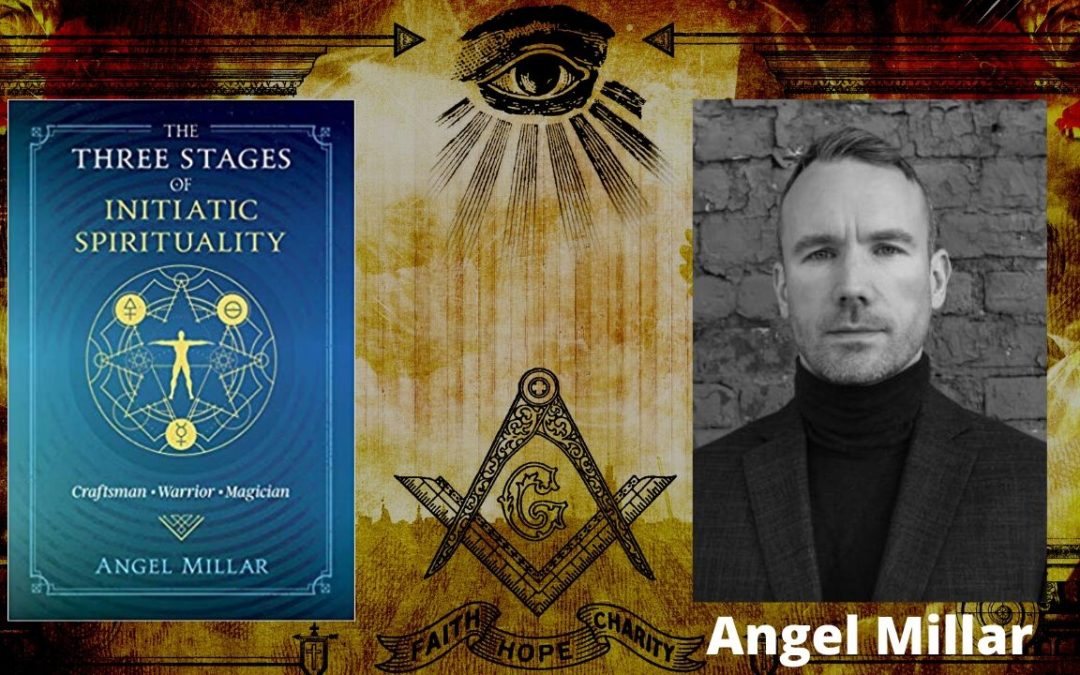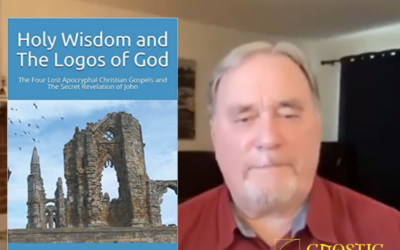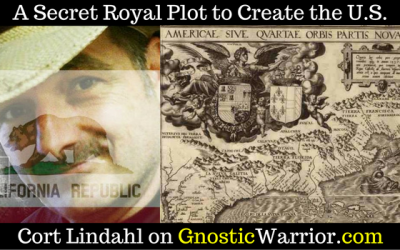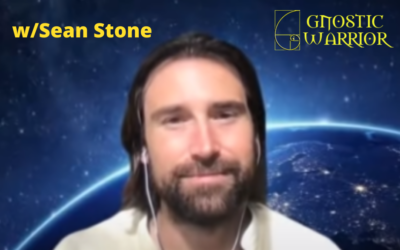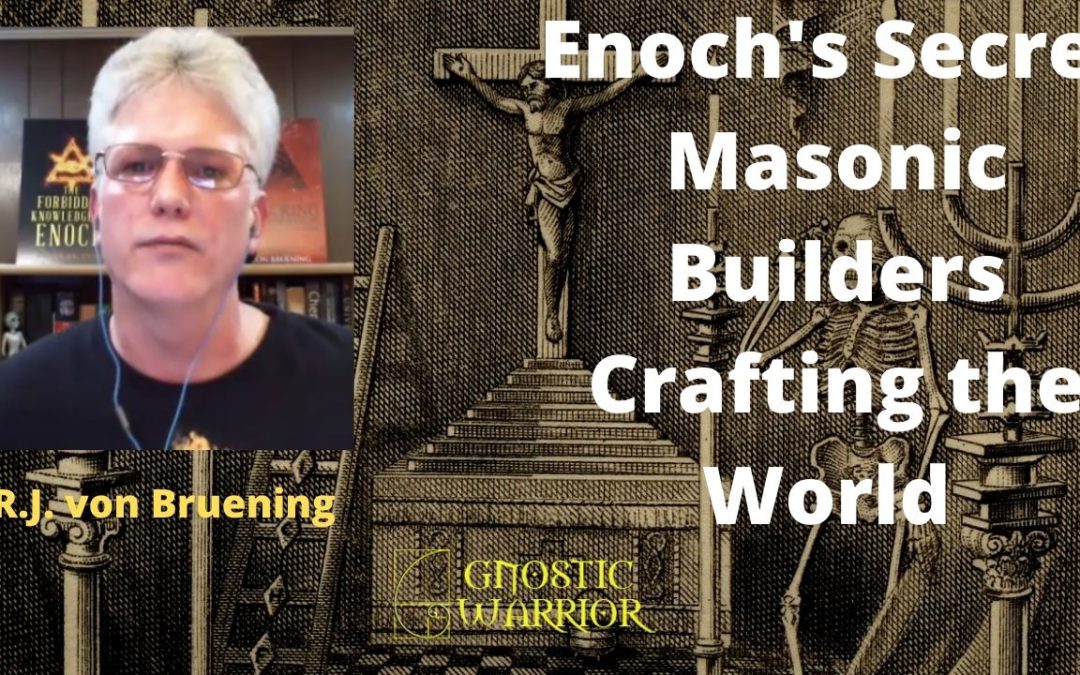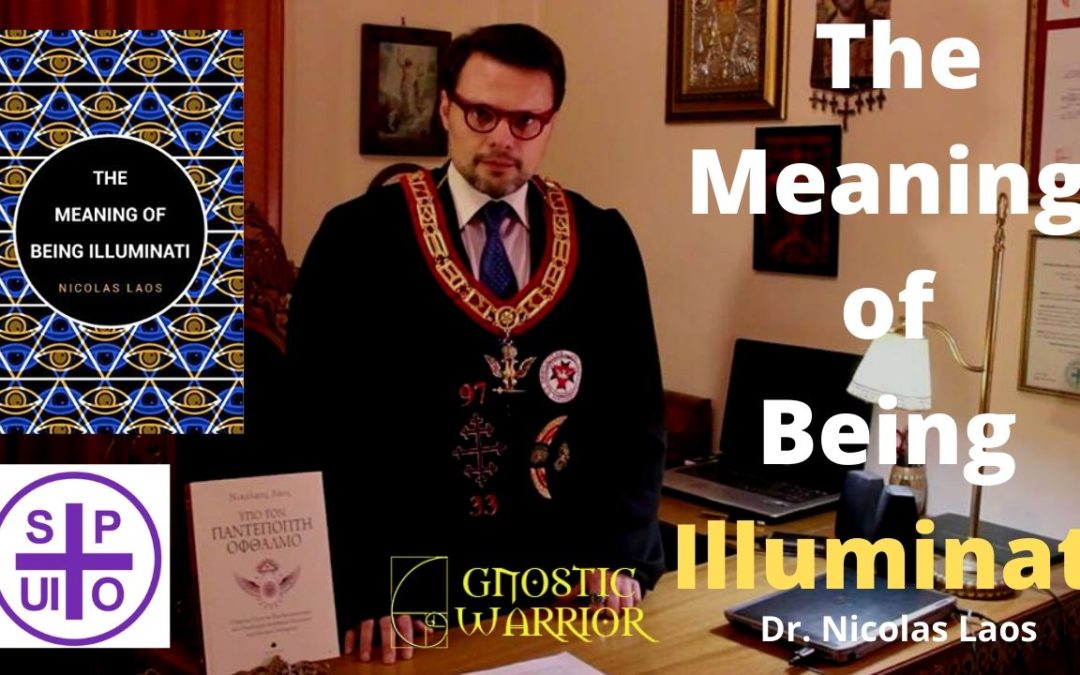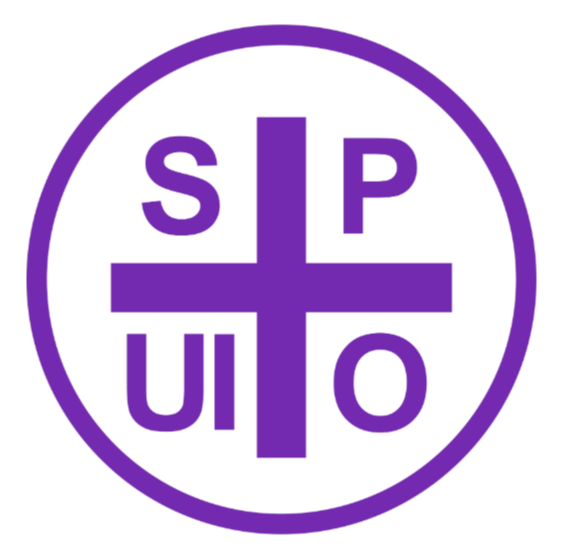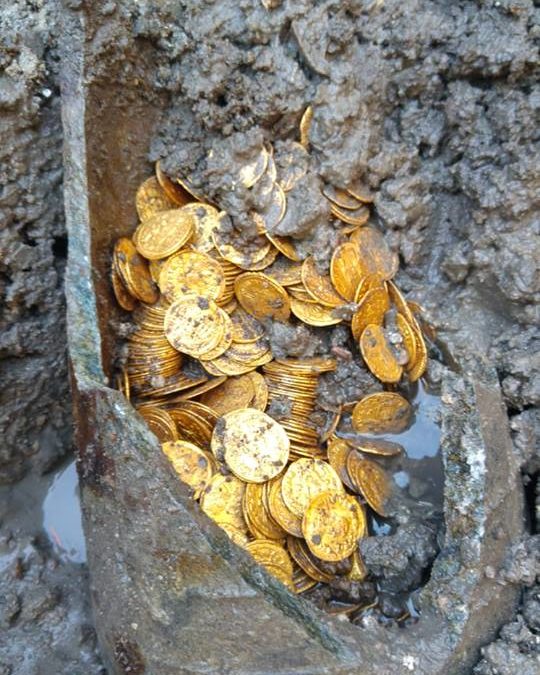
by Moe | Feb 3, 2020 | Freemasonry, History of the Brotherhood, Latest Media
The sleepy city of Como in Northern Italy has never really garnished much fanfare when it comes to modern history buffs of ancient Roman history but in the last few years, it has come back onto the radar of archaeologists after a group of workers made an incredible discovery when they found a massive treasure of gold coins and artifacts that originate from the time of what appears to be the ancient epicenter of a global Masonic Empire.
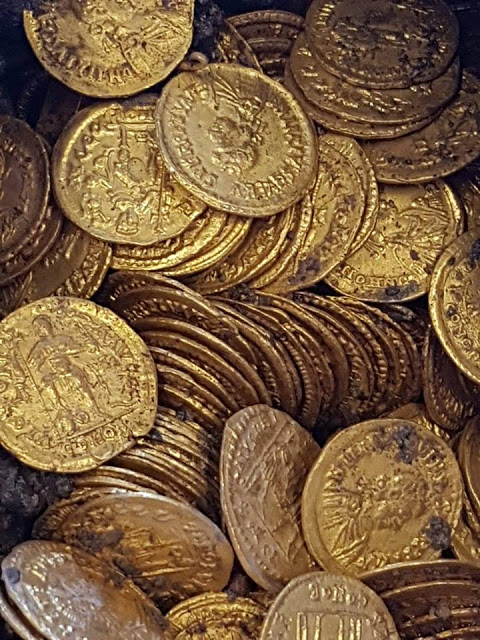
In 2018, the Italian Minister for Culture announced the findings of hundreds of Roman gold coins in Northern Italy unearthed at the site of an old theatre in Como.

The discovery was made in the basement of the old Cressoni theatre by workers who were renovating the building that was built in 1870 and was later converted into a luxury home and a cinema, but it has remained abandoned since 1997.

According to an article posted on CNN, rare coins expert Maria Grazia Facchinetti said that whoever buried the jar did so “in such a way that in case of danger they could go and retrieve it.”
The old gold coins show the era of when they were made with beautiful engravings of late the Roman emperors Honorius, Valentinian III, Leon I, Antonio, and Libio Severo, which has led people like Facchinetti to believe that “the owner is not a private subject, rather it could be a public bank or deposit.”
“They were stacked in rolls similar to those seen in the bank today,” she said, adding the coins have engravings about emperors Honorius, Valentinian III, Leon I, Antonio, and Libio Severo “so they don’t go beyond 474 AD.”
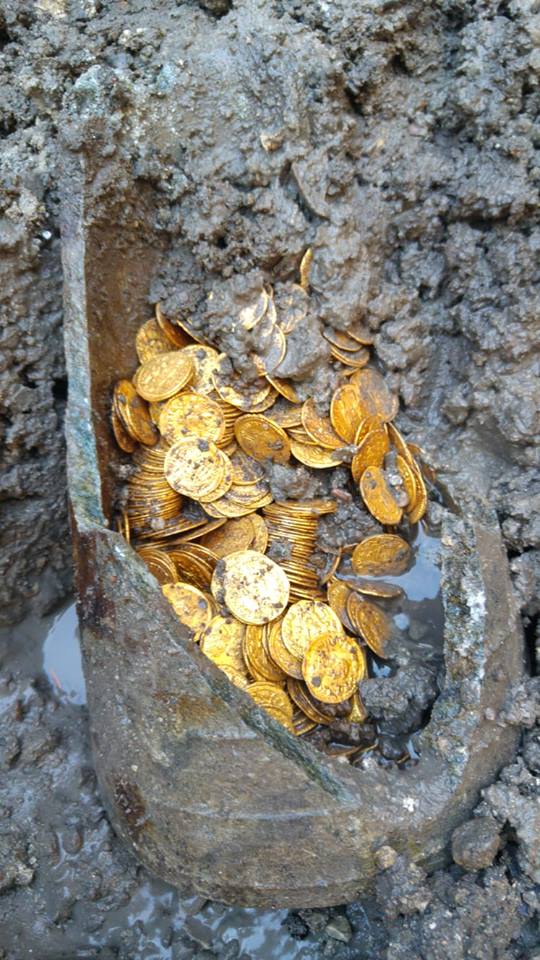
One of Como’s archaeology superintendents, Luca Rinaldi, told London’s The Times that the value of the coins is inestimable, and that “we are talking about an exceptional discovery.”
Modern Freemasons will find this story particularly interesting given the fact that these are their true ancestors who were an international Fraternity formed in Northern Italy under the patronage of the Father of the Roman Empire – Julius Caesar in 59 BCE. They were mainly imported from the Greco-Egyptian Empire into Rome after he had conquered the East in what appears to be the beginning history of a massive worldwide Roman Masonic building project.
You can learn more about these Roman Masons in my article, The Comacine Masters’ Global Masonic Knot.
Of course, a global project to build these massive Roman structures would require a lot of workers, materials, and money that I contend based on my research that they formed guaranteed pay structures for the Brotherhood during a time of chaos in order to keep them paid, fed, and housed which made them staunch loyalists to the Roman cause.
As Albert Mackey records what author Quaternal de Quincy, in his Dictionary of Architecture, notes under the heading Comacines;
“to these men who were both designers and executors, architects, sculptors and mosaicists, may be attributed the Renaissance of art and its propagation in the southern countries, where it marched with Christianity. Certain it is that we owe to them that the heritage of antique ages was not entirely lost, and it is only by their tradition and imitation that the art of building was kept alive, producing works which we still admire and which become surprising when we think of the utter ignorance of all science in those Dark Ages.” (2)
He further writes about they were the first liberals given freedom which they earned and also the money and pay they were guaranteed;
“These bodies in order to enjoy exclusive exercise of their profession, and that its profits should be secure to them, not only by law, but by the inability of others to violate it, by degrees made their business, or craft, as they called it, a profound mystery from the world at large, and only suffered their own apprentices to be initiated in its higher branches and improvements, most gradually;
and in every place where a variety of paths of industry and art were struck out, these crafts, these corporations, these masterships and these mysteries became so universally prevalent, that not only the arts of a wholly mechanical nature, but even those of the most exalted and intellectual nature—those which in ancient times had been considered the exclusive privilege of freemen and citizens, and those dignified with the name liberal—were submitted to all those narrow rules of corporations and connected with all the servile offices of apprenticeship.”
Albert Mackey notes how during the rule of the German Lombards, that their influence, landmarks, and banking system had spread all around Europe
Mackey had written;
“The Lombards—in the space of two short centuries, producing trade, in legislation, in finance, in industry of every description, new developments so great, that from them, and from the regions to which they attach their names, has issued the whole of that ingenious and complex system of bills of exchange, banks, insurance, double-entry bookkeeping, commercial and marine laws and public loans, since adopted all over Europe—all over Europe retaining, in their peculiar appellations the trace and landmarks of their origin—and all over Europe affording to capital and commerce an ease of captivity and a security unknown before.” (2)
These Old Roman Masons and Philosophers weer known as the Comacine Masters (Magistri Comacini) who hailed from what appears to be an old favorite resort town of the Greeks and Cretans called Lake Como. It was under the rule of Julius Caesar that the name was later changed to “Novum Comum” in order to honor this “international commune of Masons” which could be compared in our modern-day to a city in the U.S. called Washington DC that was founded and is ruled by FreeMasons who honor the same Roman symbology of their ancestors.
The Comacine Masters (Magistri Comacini) were originally part of a crew that Julius Caesar had recruited in a wave of approximately 6,000 immigrants and 500 illustrious Greek and or possibly Phoenician/Cretan families who were gifted his patronage. These were the wisest of philosophers, the best Masons, and the most trustworthy workers that Caesar would incorporate into his Universal Empire such as Pliny the Elder.
You will find that the Lost Treasure of the Comacine Masons is currently being held in a restoration laboratory in Milan in order to learn even more about their cultural and historical significance. I suggest that these archaeologists look to the Comacine Masters (Magistri Comacini) who may one day claim what is ritefully theirs under Roman Law and the Rule of the Caesars.
SOURCES:
1. Italian Minister of Culture
2. CNN
3. An Encyclopedia of Freemasonry and Its Kindred Sciences …, Volume 1 By Albert Gallatin Mackey, William James Hughan
Photos Credit: Mibac
Moe is the founder of GnosticWarrior.com. He is a father, husband, author, martial arts black belt, and an expert in Gnosticism, the occult, and esotericism.
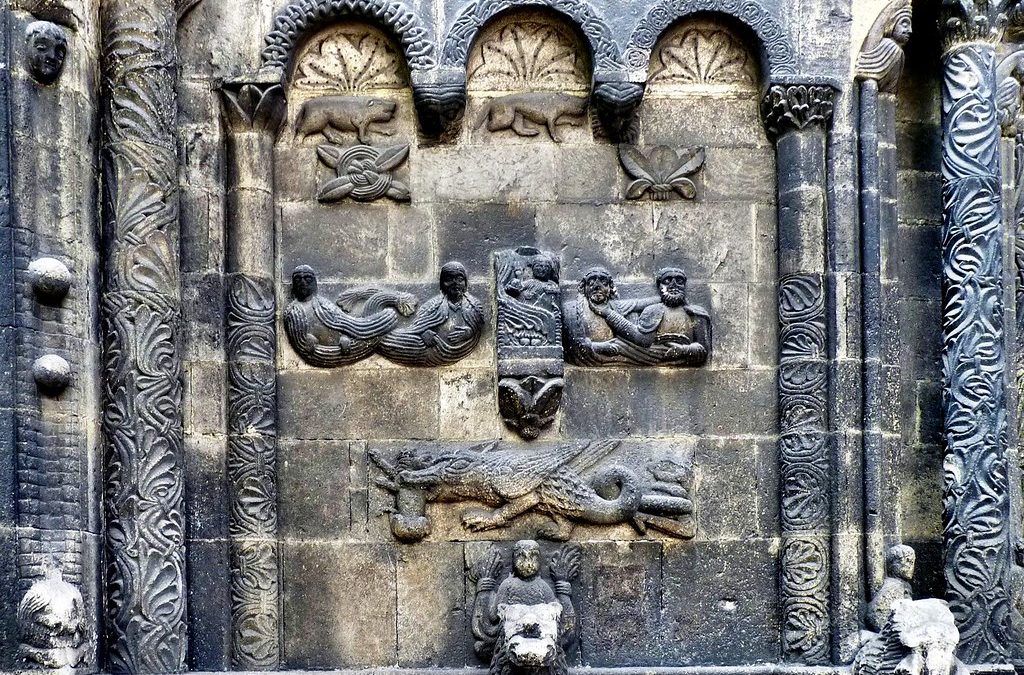
by Moe | Feb 2, 2020 | Freemasonry, History of the Brotherhood, Latest Media, Meaning of Symbols
You will find that one of the most ancient and esteemed of all Freemasonic symbols is also the least known by many modern Masons. The symbol I speak of you will discover is not relayed to us in words or in history books, but can be found etched into the immortal stones of some of the Western world’s most prestigious Christian cathedrals.
But before we reveal the symbolism, we first must understand the history and mysticism that comes from the ancestors of modern-day Masons who were known in ancient times as the Comacine Masters (Magistri Comacini).
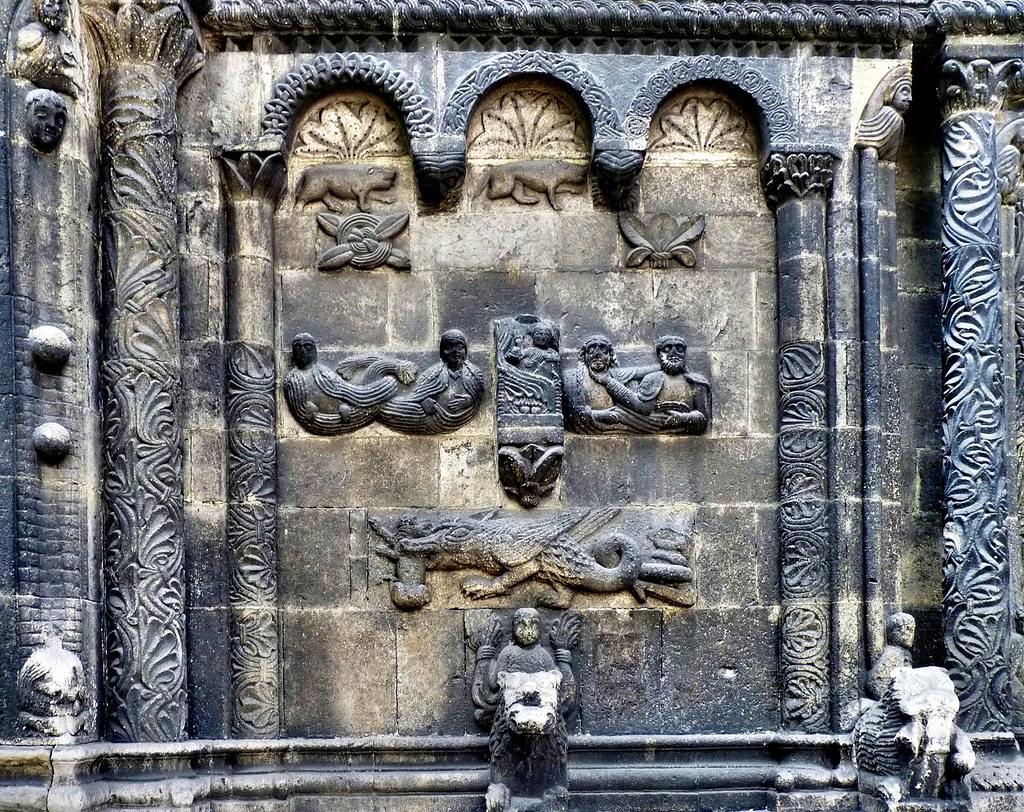
The Comacini derive their name from the Old Roman ruled colony called Novum Comum founded in 59 BCE by the Father of the Roman Empire – Julius Caesar. It was Julius who wisely imported 6000 colonists, among whom it was said there were 500 illustrious Greek or possibly Phoenician/Cretan families by which the population was formed.
One of these families was that of Plinius Secundus, also known as Pliny the Elder who became a “Roman Citizen” and I believe his family originally immigrated to Italy from either Athens or Crete and settled in Lake Como with those first colonists which also happened to a favorite resort of the Greeks who traveled there often;
Freemasonic historian, Albert C. Mackey had written about the younger Pliny having a villa there that was made by a mane name Mustio who was a Comacine architect. Mackey writes;
“It is usual to record that Como was the birthplace of the elder and younger Pliny. The younger Pliny had a villa here called Comedia and was much interested in building the city having founded baths, a library, and aided in charity for the support of orphan children.
Of the many letters of the younger Pliny that remain, one is to his builder, Mustio, a Comacine architect, commissioning him to restore the temple of the Eleusinian Ceres, in which, after explaining the form of design he wished it to take, he concludes.”
Mackey said; “There are found many interesting intrench remains of early carvings of the Comacine or Solomon’s Knot (see the illustration of parapet). On a site of an earlier church stands the present Cathedral of Como, which is built entirely of marble. (1)
Like Mackey, I have also found Comacine Masonic Master’s Monuments that still stand to this very day all over the world such as Greece, Italy, Ireland, England, Germany, Switzerland, and Russia. An International bridge of wisdom hidden in stone connecting all Masons and also the Christian heritage regardless of their race, religion, and or nationality.
This Cosmopolitanian fact would extend into the religious world given the fact that the Comacine and Frank Freemasons were the main Operative Masons since the time Saint Augustine and Saint Bede to be employed by the Roman Catholic Church in the building of all their stone cathedrals. Saint Bede, Doctor of the Catholic Church and Father of English History describes these events as it relates to his time in the book, The historical works of the venerable Bede;
“After an interval of not more than a single year from the foundation of the monastery, Benedict crossed the ocean and passed into Gaul, when he made inquiry for masons who could build him a church of stone after the Roman style, which he always loved. These he obtained, and brought them home with him; and such zeal in the work did he exhibit—out of his love for the blessed Peter, to whose honour he was doing this—that in the course of one year from the time when the foundations were laid, the church was roofed over, and within it you might have witnessed the celebration of masses.”
When the work was drawing to its completion, he sent messengers to Gaul to bring over glassmakers (a kind of workman hitherto unknown in Britain) to glaze the windows of the church, and its aisles‘ and chancels.”
Bede further writes; “And so it happened that when they came they not only accomplished that particular work which was required of them, but from this time they caused the English nation to understand and learn this kind of handicraft, which was of no inconsiderable utility for the enclosing of the lamps of the church, or for various uses to which vessels are put. Moreover, this religious trader took care to import from the regions beyond the sea, if he could not find them at home, whatever related to the ministry of the altar and the church, and to holy vessels, and vestments.”
Freemasonic historian and author, Joseph Fort Newton, summarizes this history succinctly in his early 20th-century publication, The Builders, Newton had written;
“With the conquest of Britain by the Romans, the Collegia, without which no Roman society was complete,made their advent into the island, traces of their work remaining even to this day. Under the direction of the mother College at Rome, the Britons are said to have attained to high degree of excellence as builders, so that when the cities of Gaul and the fortresses along the Rhine were destroyed, Chlorus, A. D. 298, sent to Britain for architects to repair or rebuild them. Whether the Collegia existed in Britain after the Romans left, as some affirm, or were suppressed, as we know they were on the Continent when the barbarians overran it, is not clear.
Probably they were destroyed, or nearly so, for with the revival of Christianity in 598 A. D., we find Bishop Wilfred of York joining with the Abbott of Wearmouth in sending to France and Italy to induce Masons to return and build in stone, as he put it, “after the Roman manner.”
This confirms the Italian chroniclists who relate that Pope Gregory sent several of the fraternity of Liberi muratori with St. Augustine, as, later, they followed St. Boniface into Germany.
Again, in 604, Augustine sent the monk Pietro back to Rome with a letter to the same Pontiff, begging him to send more architects and workmen, which he did.
As the Liberi muratori were none other than the Comacine Masters, it seems certain that they were at work in England long before the period with which the OLD CHARGES begin their story of English Masonry. Among those sent by Gregory was Paulinus, and it is a curious fact that he is spoken of under the title of Magister, by which is meant, no doubt, that he was a member of the Comacine order, for they so described their members; and we know that many monks were enrolled in their lodges, having studied the art of building under their instruction.
St. Hugh of Lincoln was not the only Bishop who could plan a church, instruct the workman, or handle a hod. Only, it must be kept in mind that these ecclesiastics who became skilled in architecture were taught by the Masons, and that it was not the monks, as some seem to imagine, who taught the Masons their art. Speaking of this early and troublous time, Giuseppe Merzaria says that only one lamp remained alight, making a bright spark in the darkness that extended over Europe:
It was from the Magistri Comacini. Their respective names are unknown, their individual works unspecialized, but the breadth of their spirit might be felt all through those centuries, and their name collectively is legion. We may safely say that of all the works of art between p. 115 A. D. 800 and 1000, the greater and better part are due to that brotherhood—always faithful and often secret—of the Magistri Comacini. The authority and judgment of learned men justify the assertion.” (2)
According to Albert Mackey, for this Great Work, Freemasons are indebted to the Catholic Church and these Masons for building these Roman Churches. Mackey had said, “We Speculative Masons should give full credit to the Roman Catholic Church for employing and fostering our Operative Brethren through many centuries and making possible Speculative Freemasonry of to-day, even though the Church is now our avowed enemy.”
These French Comacine masons that Bede mention I have found were known for their opus gallicum (Latin for “Gallic work”). This was a technique where precise holes were created in stone masonry for the insertion of wooden infrastructure. These building techniques are mentioned in Julius Caesar’s De bello Gallico and they were used extensively in church architecture.
In researching this history, it appears that the Comacine Masters had really gained momentum during the invasions of Rome by the Lombards of Germany when they gained their patronage. According to Mackey;
“The Lombards, who had come from northern Germany and settled in northern Italy in 568, at once began to develop along many lines which made Lombardy known all over Europe—the result of which influence Europe feels to-day. They developed along lines which in our every-day parlance may be called business.
They were not primarily architects or builders, and they employed the Comacines for this kind of work and it was the Comacines who developed what is known today as Lombard architecture, covering a period that we may roughly put as from the seventh century to the Renaissance.
The first to draw attention to the name Magistri Comacini was the erudite Muratori, that searcher out of ancient manuscripts, who unearthed from the archives an edict, dated November 22, 643, signed by Rotharis, in which are included two clauses treating of the Magistri Comacini and their colleagues. ” (1)
In an old publication, the Journal of the Royal Institute of British Architects, Volume 6 it says;
“Our earliest documentary token of the corporate activity of the Guild is to be found in an edict of King Rotharis, dated 643, and brought to light by the archaeologist Muratori, which contains two clauses relating to the conditions for compensation and liability for accidents on buildings under the charge of the Magistri Comacini.
These are sufficient to prove their existence as a recognized body in the seventh century. Their origin has been ascribed by various theorists to Rome, Byzantium, and the East. The Germans, I believe, have been the chief supporters of the theory of Byzantine origin, while that which points to an Oriental source depends upon the internal evidence in the works of the Guild of supposed Eastern symbolism in certain forms of decoration. On the whole, the view that the Comacine masters are the descendants of the Roman collegia is the best attested and the most inherently probable.
It is backed by the prevalence of what we may call Comacine work in many of the so-called Lombard and pre-Lombard churches of Rome, in one of which, the Sub-Church of San Clemente, a fresco of the eighth century represents what Leader Scott claims to be a Magister in the act of directing his subordinates.
Cesare Cantu, in his Storia di Como, perhaps in jealousy for the special honour of Como, looks upon the Comacine Magistri as the parents of modern Freemasonry. Whether this be so, or whether the Comacine masons were only a link in a still longer chain of succession, there is no doubt as to the points of similarity in the Comacine constitution and that of the Freemasons.” (3)
Looking further into this lost history, I found some fascinating information shared by the authors, J. G. Findel, Carl van Dalen in a German book on the History of Freemasonry. They write;
“Upon the overthrow of the Republic, when all other corporations lost their privileges, owing to the despotism of the Emperors, the thirst of the rulers for splendor and renown caused the collegia to be confirmed in nearly all their former rights‘ and privileges. Three members were at least required to form a college, and no one was allowed to be a member of several colleges at the same time.
Lay or amateur members (patrons) were admitted; the corporations held their meetings in secluded rooms or buildings exclusively appropriated to that purpose, and most of them had their own schools for the instruction of apprentices and lower grades of workmen. They had also their own peculiar religious ceremonies and priests, and an exchequer belonging to the corporation, an archive, and their own seals.
The members took an oath mutually to assist each other; indigent members received relief, and on their demise were buried at the expense of the corporation. They kept registers of the members, some of which are still extant; they had also their records, their masters (magistri), wardens (decuriones), fellow-crafts and apprentices, censors, treasurers, keepers of archives, secretaries, and serving brethren.”
The authors conclude, “Their tools and implements had, besides, a symbolical meaning, and in religious matters they were tolerant.” (4)
The Grand Lodge Bulletin, Volumes 15-17 details how they were not ordinary workmen, but true artists whose symbol was King Solomon’s Knot and when the Comacine were driven out of Rome, they took refuge in Lombardy, Northern Italy;
“When the Collegia were driven out of Rome, they took refuge in Lombardy, and the Comacine Masters were almost certainly their successors. Those Masters were not ordinary workmen. They were artists, and to them were due to the changes in styles of architecture in Europe during the cathedral-building period, as Hallam tells us in his study of the Middle Ages. For a long time these changes of style, appearing simultaneously everywhere, puzzled students. Further knowledge of this powerful and wide-spread order explained it.
They had their lodges, each with its master and wardens; their oaths, tokens, grips, and passwords, which, as Hallam says, formed a bond of union stronger than legal ties. They wore white aprons and gloves.
“King Solomon’s Knot” was one of their emblems, and the endless, interwoven cord another—but, later, the lion’s paw became their symbol. With the decline of Gothic architecture their order seems to have declined, or, rather, coalesced with the other guilds of masons.” (5)
The Quatuor Coronati Masonic Research Lodge details this time period showing that it was under the patronage of Charlemagne that the Comacine had truly flourished into an international order connecting Masons in Italy, France, and Germany and how the Bavarian Catholic Illuminatus, Albertus Magnus has helped strengthen their bonds by his writings. They had written;
“It was under the widespread rule of Charlemagne that the Comacines began their many emigrations. Adrian I. wrote for Magisiri from the north of Italy to execute works in Rome, and still existing Comacine intricacy are a proof of their work there in the 9th “century. Charlemagne is known to have brought marbles from Italy for his church at Aix-la-Chapelle, and the Lombard character of its style suggests that he also imported architects, who could scarcely have been other than the Comacine Masters.
In the troublous times which succeeded the withdrawal of the Carlovingian dynasty from Italy the Guild found more employment in building castles than churches, and it was not until the distant warfare of the Crusades left Italy comparatively tranquil that the art of sculpturesque architecture revived. Leader Scott gives the genealogy of the style as follows:
“ First the Comacines continued Roman traditions as the Romans continued Etruscan “ ones; next, they orientalized their style by their connection with the East through “ Aquileia, and the influx of Greek exiles into the Guild. Later came a different influence “ through the Saracens into the South, and the Italian Gothic was born.”
Independently of Charlemagne the great building guild of the Middle Ages had another connection with France through the Normans. The old chronicles shew that S. Guillaume, Abbot of S. Benigne in Dijon, a Lombard by birth, sent to his own country for Masters to build his monastery there, and further that he was invited to Normandy by Duke Richard II., where he stayed twenty years erecting monasteries and sacred buildings, and that when William of Normandy conquered England the round arched style passed ‘over with him.
Certainly the oldest churches both in Normandy and England have great affinity to Lombard buildings, the chief difference being that the roof has a higher pitch, necessitated by the damp climate. Leader Scott adduces evidence to show that at the time of the Norman occupation of Sicily there was a large emigration thither of members of the Comacine Guild; which accounts for the architecture there having so much more affinity to Italian than to French-Norman forms; and it also accounts for the Saracenic cast which Lombard architecture took after that era.
In Germany the style of buildings, such as are found at Cologne, Worms, Speyer and Zurich, seems to prove that Lombard influence preceded the native Gothic architects who subsequently developed the pointed style. Leader Scott’s theory is that in their earlier emigrations the Comacine Masters founded the usual lodges; that the Germans entered their schools and became Masters in their turn, and eventually split off from the universal Masonic Brotherhood, forming a separate national branch. Albertus Magnus, a Bavarian who studied at Padua, strengthened the link between Germany and Italy.” (6)
BEFORE THE GERMAN REICH, THERE WAS THE GREEKS AND PHOENCIANS
If we are to look back to the history of the first Comacine Masters under Julius and Augustus Caesar, we will find that they were visiting and building in Germany since that time and even Pliny the Elder who at the age of about 23 went to Germany, where he served under L. Pomponius Secundus to the command of a troop of cavalry (praefectus alae), and afterward wrote a memoir of Secundus. It was said that Pliny had traveled over most of the frontier of Germany and the Danube where he composed over 20 books including his treatise de Jaculatione equestri and a history of the Germanic wars.
When Pliny went back to Rome it was said to be during part of the reign of Nero when he spent his day in retirement. (7)
This Comacine connection to Pliny and Nero I detail in my 2nd follow up article, “The Lost Masonic Treasure of the Comacine,” where I will put forth research of a possible lost hoard of gold that appears to belong to the exact time period and to Ceasar’s Comacine Masters
THE COMACINE LOST SYMBOL
The symbol that ties Masons to one another through the Ages is called the “Comacine Knot” and also “Solomon’s Knot.” In Latin, sigillum Salomonis, meaning the “Seal of Solomon” to represent the “immortality and eternity” of their Great Work and also time, motion, and the powers of ancient hidden forces that govern our universe.
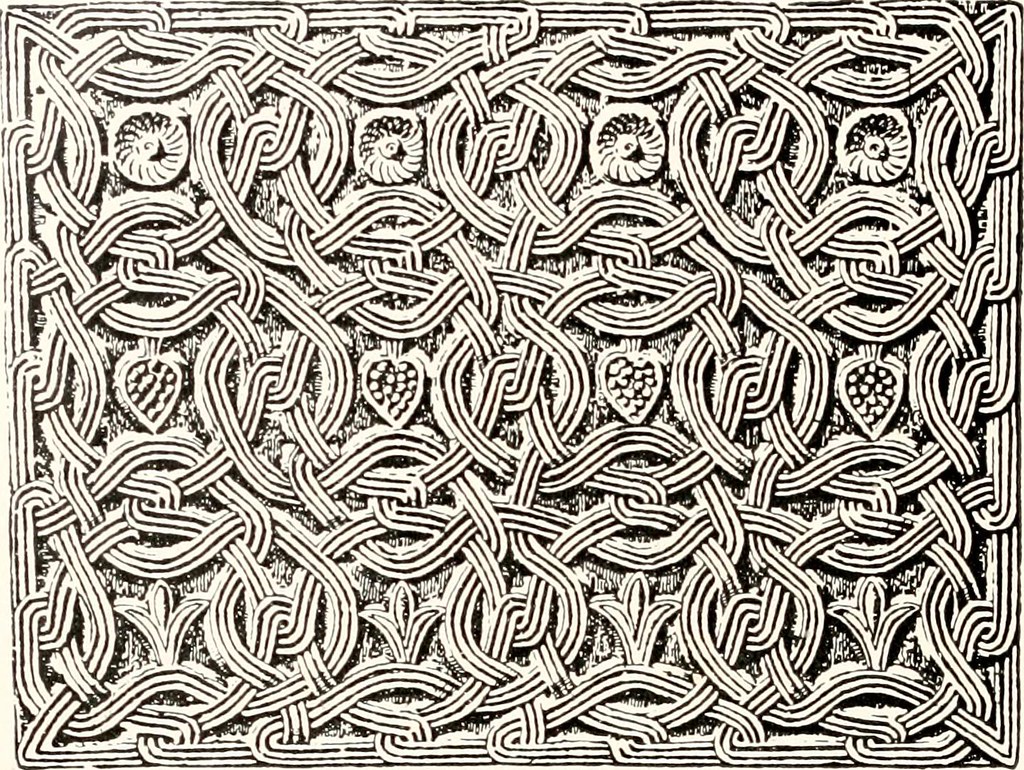
Here is an excerpt from the Royal Society of Antiquaries of Ireland showing the importance of this symbol;
“The existence of the guild under the Longobard rule having been proved, and their intimate connexion with and responsibility for the erection of the most famous buildings of the Lombardic type, the author goes on to show the numerous foreign emigrations of the Comacine Masons and establishes the Norman and German link.
An interesting chapter on the origin of Saxon architecture by the author’s brother, the Rev. W. Miles Barnes, tends to show that the Comacines were the survival of the Roman Collegia, and that when St. Augustine came to England he brought architects and masons with him, and that these would be chosen from the Comacines then firmly established under the patronage of the Popes.
For Irish archaeologists, the most interesting theory is that developed in the chapter on the Pound Towers and Crosses of Ireland, whereby a Comacine influence is shown in the ornament of our Crosses. The interlaced work, so long considered as peculiarly Celtic, is shown to be purely Comacine, and whether known as the Italian intreccio, meandro, or “Solomon’s knot,” it is the distinguishing badge of the Comacine Masons.
The author, in this connexion, says on page 82:
“In studying the scrolls and geometrical decoration of the Comacines, one immediately perceives that the intreccio, or interlaced work is one of their special marks. I think it would be difficult to find any church or sacred edifice, or even altar of the Comacine work under the Longobards which is not signed, as it were, by some curious interlaced knot or meander, formed of a single tortuous line. The Comacine believed in his mystic knot; to him, it was a sign of the inscrutable and infinite ways of God whose nature is unity. The traditional name of these interfacings among Italians is ‘Solomon’s knot.'” (8)
To add to the story of this symbology, I interpret it as an interlacing global knot of living human stones who have been imbued into the very stones that they put their heart and souls into. A Testament of the Masonic will to one day create a worldwide temple of Wisdom under God and our Lord allegorically referred to in the ancient teachings as “Solomon’s Temple.”
It is in the meaning of Comacine that all Freemasons of the past, present, and future must realize that tie them together in a multi-racial, multi-ethnicity, and multi-national corporation of operative artificers. In my articles on their Capitals named Tyre, I list many of their major Masonic cities starting in Egypt then to the West in Crete and into Europe.
The Knot of the Comacine reveals to us a compound word comprised of the words “com, a and cine” that constitute the ancient ethos of the order.
The word com means “with, together, unite” and derivative words with similar meaning would be words like commune, community, comrade, commissar, communist, etc.
The meaning of the word ‘a’ is “to identify a thing or person and used to indicate membership of a class of people or things”
The last word in Comacine is cine which means tribe, clan, kindred, or Brothers.
It is derived Anglo-Saxon Cynn, Old English Kin, Irish Cine, Scotch Gaelic Cinneadh or Cinne, and Welsh Cenell derived from a root Cinn, to grow or increase, and meaning the increase or growth of a family, tribe or clan by successive generations.”(9) Also cennan; German kennen, to know, kindred; acquaintance: kith and kin, blood relations; friends and relations. (10)
Words derived from this Brotherhood are kind and kindness ie: goodwill and benevolence. (11)
SOURCES:
1. ENCYCLOPEDIA OF FREEMASONRY AND ITS KINDRED SCIENCES by ALBERT C. MACKEY M. D.
2. The Builders, by Joseph Fort Newton, [1914]
3. History of Freemasonry – Translated from the second German edition By J. G. Findel, Carl van Dalen
4. Journal of the Royal Institute of British Architects, Volume 6
5. Grand Lodge Bulletin, Volumes 15-17
6. Ars Quatuor Coronatorum: Being the Transactions of the Quatuor …, Volume 12
7. A Classical Dictionary of Greek and Roman Biography, Mythology and Geography By William Smith
8. Journal By Royal Society of Antiquaries of Ireland
9. Proceedings of the Society of Antiquaries of Scotland, Volume 32 By Society of Antiquaries of Scotland
10. The Encyclopaedia Britannica: A Dictionary of Arts, Sciences -Volume 4
11. A Dictionary of the English Language By James Stormonth, Philip Henry Phelp
Moe is the founder of GnosticWarrior.com. He is a father, husband, author, martial arts black belt, and an expert in Gnosticism, the occult, and esotericism.

by Moe | Dec 29, 2019 | Freemasonry, Gnosis, Gods & Goddesses, History of the Brotherhood, Latest Media
Plato, writing in approximately 360 BC is the first philosopher to bring forth the concept known primarily in Gnosticism as the Demiurge which was derived from the “Platonic theory of creation out of primordial matter.” His theory was described in his most infamous book, Timeus which was based on his dialogue with his former Master, Socrates.
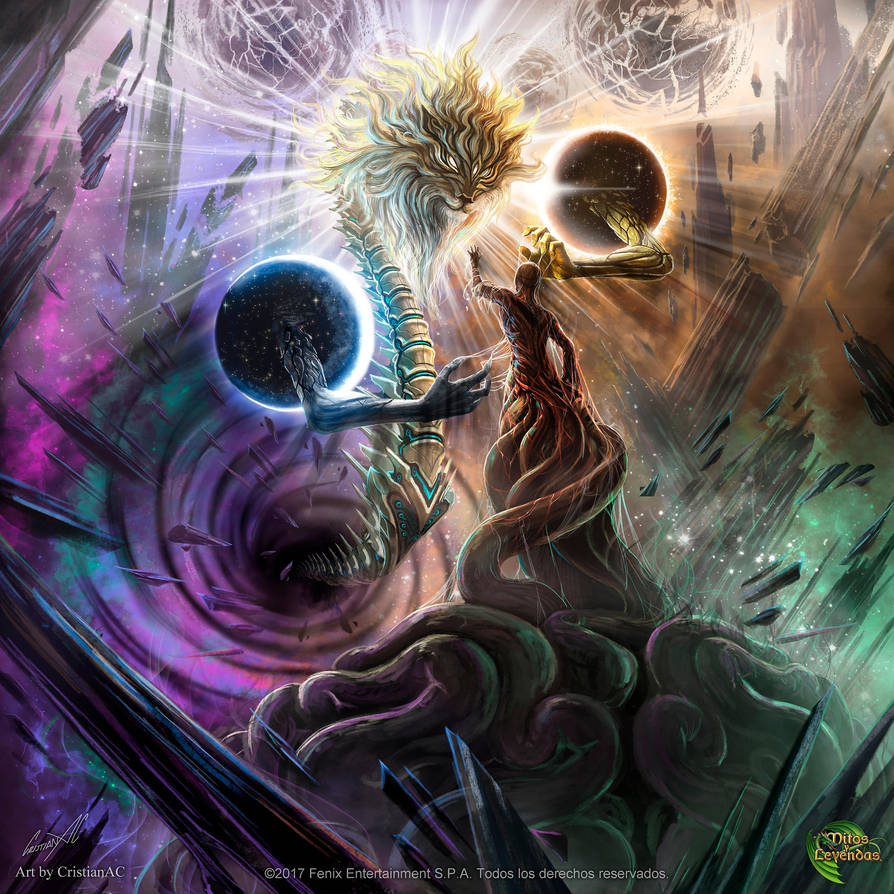
Plato’s theory of the Demiurge is the result of carrying on the Greek philosophical tradition of studying the As Without ie: nature of space and time to that of his master Socrates who shifted the focus of his students from studying the world and universe which they believed to be a living and breathing organism to the moral issues and the nature of man as it relates and how it is all interconnected with one another.
Plato’s cosmology had put forth a theory that the behavior of human beings could not be understood purely by their behavior and or in mechanistic terms but required a knowledge of the environment ie: the world and universe in which the self is intimately linked.
These concepts of the self later led to the ideas that humans are a microcosm of the great macrocosm and to the most infamous Gnostic axioms, “Know Thyself” and “As Above So Below, As Within, So Without.”
In Timaeus, Plato continues the dialogue as the character Timaeus with Socrates in which he refers to the Demiurge as a benevolent entity who “fashioned and shaped” the material world which remains imperfect. Plato’s cosmology of the “world-forming God” (Srjiuovpyos, demiurge) is the agent who takes the preexisting materials of chaos, arranges them intelligently according to the models of eternal forms, and produces all the physical things of the world, including human bodies formed or shaped out that which is not being, ie; space, “with regard to the Ideas.”
According to the Timaeus, humans live on earth at the center of the kosmos which he compares to one unique perfect cosmic organism, in whose image we have been created, and whose nature and destiny have been ordained by unseen forces from eternity. Plato’s Demiurge became the foundation of the natural philosophical concept called Organicism which views the universe and its parts as an organic living organism based on the Ancient Greek view that the world is orderly and alive.
Platos theories are a continuation of the teaching of previous Philosophers such as Pythagoras who said that the world as a living breathing being (Robinson, 1968) and claimed that “The whole air is full of souls which are called genii or heroes” which played such a prominent role in Greek creation stories for many centuries. The ancient mythos that I will attempt to prove in my next article on the Demiurge is now being validated by science to become part of our new organic reality based on Truth rather than theories.
It is interesting to note that Plato makes it clear that in attempting to explain the Demiurge and understand the “beginning,” Socrates and his friends specify that they do not expect to find the “truth,” but only a “likely story” (eikos mythos), which can be construed today as philosophical theories, worthy of scientific belief.
According to Plato’s “likely story,” the four physical elements of earth are water, air, and fire had existed before the creation of the world and the Demiurge created the world out of primordial material. The Demiurge creates an intelligent universe because intelligent life is better than mere life. It is alive and intelligent filled with mortal organisms that act as a microcosm of the great macrocosm.
Plato mentions the “primordial receptacle” which is defined as “empty of all forms” and it receives all things in a “wondrous” way, and its connection to the intelligible is “incomprehensible.” He describes the primordial receptacle as “not a substance” but merely an amorphous “stuff” that is not “tangible” and is “in no way perceptible to the senses.”
The meaning of primordia is an organ, structure, or tissue in the earliest stage of development from the Latin, neuter of primordius ‘original’, from primus ‘first’ + ordiri ‘begin’. A receptacle is defined as a container, device, etc., that receives or holds something.
This concept of a primordial receptacle had led me to what I believe is one of the best modern interpretations of the Demiurge that I have found and will scientifically expand upon in the future is from, Baruch Spinoza who was a Dutch philosopher of Portuguese Sephardi origin and considered a radical by his contemporaries. He had written, “Alles ist eins, und eins ist alles.”
He says, “The Demiurge is the space that holds the universe. He himself being one is the universe”
In researching the various interpretations from Plato, Neoplatonists, the Gnostics, early Judeo Christian writers, and Church Fathers, the main consensus is that he is the “God of Matter”, “Judge and sanctioned by God himself,” “Lord of the Material Realm and Flesh” and the Gospel of Phillip reveals to us that the bad angels of the Demiurge are known as the “domesticated ones” that are “wild and living apart,” and who are “submissive and obedient” in which Sophia uses them in “preparing for everything to come into being.” (Gospel of Philip 60:24-31)
To explain the Demiurge in the most simplest terms, we can say that he is an ancient philosophical concept that has been used since the time of Plato (Timaeus) to describe an organic entity, diety and even a God that was endowed by the Universe with a special type of the creative energy for intelligently fashioning, molding, maintaining, and even legislating what we know as you, me, and the world.
In Freemasonry, the Demiurge is known as the “Great Architect of the Universe or G.A.O.T.U.” and the Masonic motto “ORDO AB CHAO.”
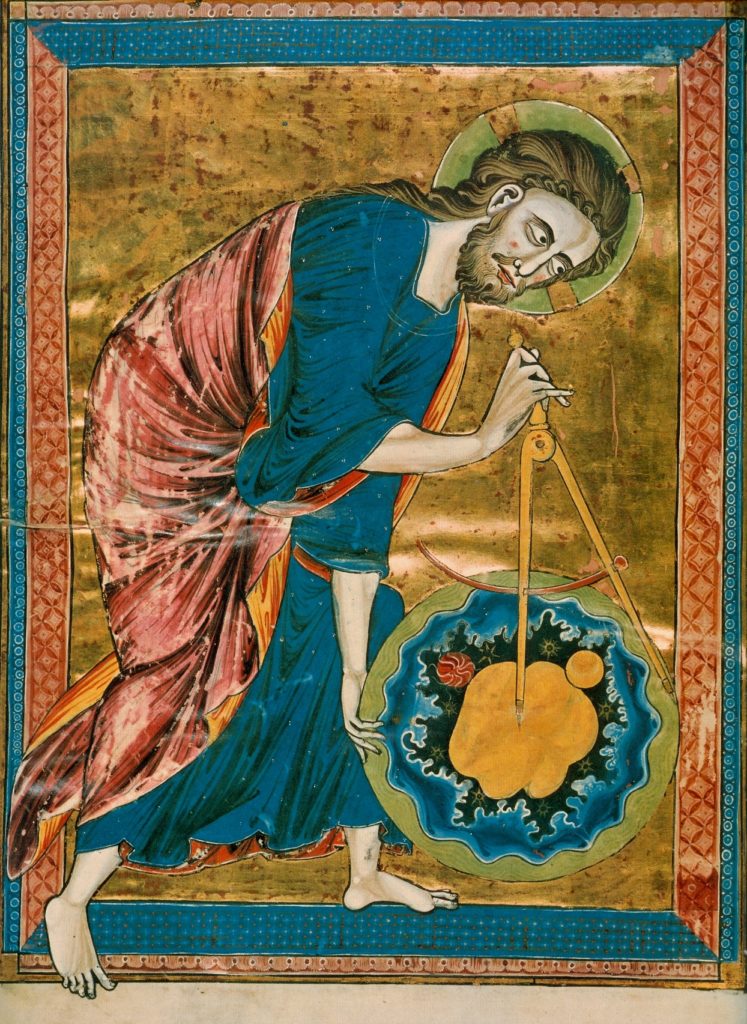
To Plato, space was the “nothing ” out of which the world of phenomena based on ideas that take the shape of mathematical forms in which space is then molded into the world of Ideas. These ideas are now mathematical structures that provide the intermediate link from the phenomena of pure “forms” born from the world of Ideas.
The ancient Greek word idea was spelled “εἴδω or eídō” and was pronounced I-do. The verb oida (to know) comes from the root eido (to see). In Plato’s philosophy, he calls the more real world, the world of eidos (idea in English) which is the Matrix or material reality constructed by man through ‘Forms’ or ‘Ideas’. This is the Platonic Eidos or Idea which is the main premise behind “The theory of Forms or theory of Ideas” to represent the most accurate reality.
The Greek words found in the New Testament that are often translated in English as “know” and “to see” are “eido, eida, eidos, oida, ida, ginosko, epiginosko, epistamai, gnosis and epignosis.” These words have the same semantic range and general meaning as the Greek words “ginosko and eido” are translated as, “to observe or to come to know through observation – to perceive and understand.”
This is why the word idea means, “to conceive anything in the mind; also a model, a copy to be imitated.”
To copy ideas of a philosophical model and expand upon its sacred instruction is the very reason that since the beginning of recorded time, the greatest philosophers, religionists, and scientists are almost always imitated and honored by those who have gone after them. A divine right of succession that makes the Son the Father just like Plato had done with the teachings of his spiritual forefathers being Pythagoras and Socrates.
As if we are all products of creation and from the world of ideas, we are Sons molding one another from the First Father, and then if we supersede these spiritual teachings of our Forefathers as was their desire, we would become Fathers ourselves whose Philosophies develop or enhance religious tradition, doctrines, laws, and the foundation of all sciences from the beginning of recorded time. As if we are passing the baton of ideas to one another which are molds meant to be expanded upon and grow rather then remain the same or stagnate which is the first phase of decay/death.
By doing so, we break free of the Demiurge.
This phenomenon of ideas connected via space and time I intuitively experience almost every day in my research of these ancient concepts through the thread of time when I encounter the very same people such as Pythagoras, Plato, Gnostics, and Church Fathers stretching back thousands of years, over and over again. Then there is the current world of modernity where we use the 5G internet as a vehicle in space to connect with like-minded souls around the globe who seem to be operating in the same frequency in the air with this same philosophical research.
Hence, “You Will Know Them by Their Fruits.”
This is why I believe Plato is honored by Christian Fathers as one of the premiere Gnostics and his teachings became part of Christian doctrine while other Gnostic concepts were analyzed and deemed to be inappropriate for the teachings of Gentiles. In speaking against the heresies of these ‘other Gnostics,’ Irenaeus had said that;
“Plato is proved to be more religious than these men, for he allowed that the same God was both just and good, having power over all things and Himself executing judgment, expressing himself thus, And God indeed, as He is also the ancient Word, possessing the beginning, the end, and the mean of all existing things, does everything rightly, moving round about them according to their nature; but retributive justice always follows Him against those who depart from the divine law.
He continues, “Then, again, he points out that the Maker and Framer of the universe is good. And to the good,
he says, no envy ever springs up with regard to anything;
thus establishing the goodness of God, as the beginning and the cause of the creation of the world, but not ignorance, nor an erring Æon, nor the consequence of a defect, nor the Mother weeping and lamenting, nor another God or Father.”
From Plato, the next interpretations of the Demiurge would come from the likes of Philo of Alexandria, Ptolemy, Marcion, Valentinus, and early Church Fathers who all expanded upon Plato’s originally theory which I will explain below. I will also attempt to expand upon Plato and his Gnostic predecessor’s “likely story” of the Demiurge using modern science which I believe will if it has not already become in the year 2020, a true story, the year of the Demiurge.
One of the earliest descriptions from the school of Plato comes down to us from Philo of Alexandria who says, “God is not only the Demiurge or Architect of the world but also its Creator.” (De Somn. 577) Plotinus, who is considered the founders of Neoplatonism had said, “the mundane soul (pvpavia, that quickens the material heavens), and our own souls rank next in order to the Demiurge” [Plotin. Enn. II. i. 5].
The Marcionites, the followers of the Doctrines of Marcion (Rome 140-150 AD) claimed that Jesus was the Son of the True God, who came to reveal the existence of his Father,” and “to deliver man from the empire of the Demiurge.” According to Origen, the Marcionites held that the good principle governs the Christians, the creating principle the Jews, and the evil principle the heathen.
The main tenants of the Marcionite system were to deny the influences of the flesh in which the Demiurge was the ruler by condemning marriage, wine, and whatever is grateful and pleasant to the body.
Ptolemy, in his Letters to Flora said the Demiurge acts as “the arbitrator of the justice which depends on him” (Letter to Flora 7:5) and he “established a rest for those who obey him, but for those who disobey him, he also established punishments” (Tripartite Tractate 101: 25-28).
“The one who judges and punishes is . . . the law-giver himself” (Herakleon Fragment 48). According to him, the Demiurge’s role as a judge is sanctioned by God himself. He is the “the servant commissioned for that purpose, who does not bear the sword in vain, the avenger of the king” (Herakleon Fragment 48). Judging and punishing the wicked as he rewards the virtuous, he acts as a servant of the true God. However, the spiritual ones who have attained Gnosis appear not to be subject to his judgment. Because of their redemption, “it has come to pass that they can neither be detained nor even seen by the judge” (Against Heresies 1:13:6)
Valentineus , the founder of the Valentinians says but folly is the power of the Demiurge, for he was foolish and devoid of understanding, and imagined himself to be fabricating the world. Valentinus quoting the quaternion said the Demiurge is “a source of the everlasting nature having roots; “and Sophia (is the power) from whom the animal and material creation has derived its present condition. But Sophia is called “Spirit,” and the Demiurge “Soul,” and the Devil ” the ruler of this world,” and Beelzebub “the (ruler) of demons.”
According to Valentinian tradition, the Demiurge is formed as an “an image of the Father”(Excerpts of Theodotus 47:1-3) and ‘god’ and ‘demiurge’ and ‘king’ and ‘judge’ and ‘place’ and ‘dwelling’ and ‘law'” (Tripartite Tractate 100:21-30).
It is interesting that the Valentinians find no issue in also calling the Demiurge by the names “Father” and “God” to describe him (cf. also Against Heresies 1:5:1, Valentinian Exposition 38). In their system, he is an actual image of the true God, but in a fallen state since the Demiurge is ignorant on account of his non-spiritual nature when compared with the true God and his Son, Jesus Christ, he is “coarse” or “rough” (Excerpts of Theodotus 33:4).
Church Father Irenaeus said that in order to deliver the souls of mankind from the Demiurge and put an end to this war, the Supreme God sent his Son Jesus Christ, in the appearance of a body, “dissolving the law and the prophets, and all the works of him that made the world.”
The Demiurge’s son is thus the representative of a union between the systems of the East and of the West.
For God proclaims in Isaiah; “I form the light, and create darkness: I make peace, and create evil: I the Lord do all these things.” (Isa. xlv. 7.)
Moe is the founder of GnosticWarrior.com. He is a father, husband, author, martial arts black belt, and an expert in Gnosticism, the occult, and esotericism.
